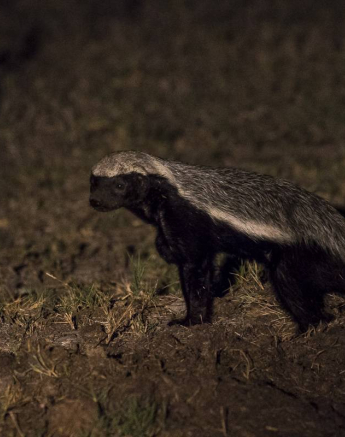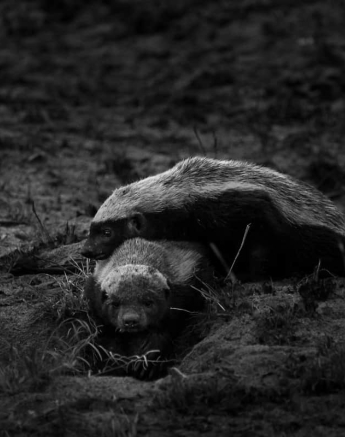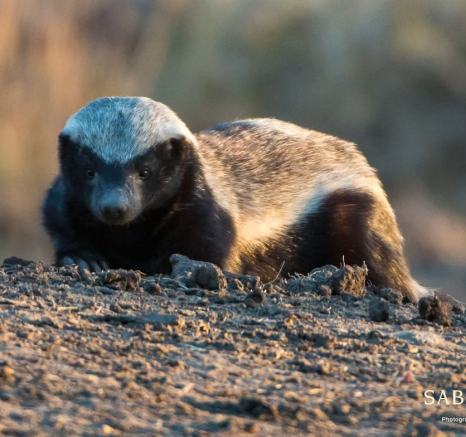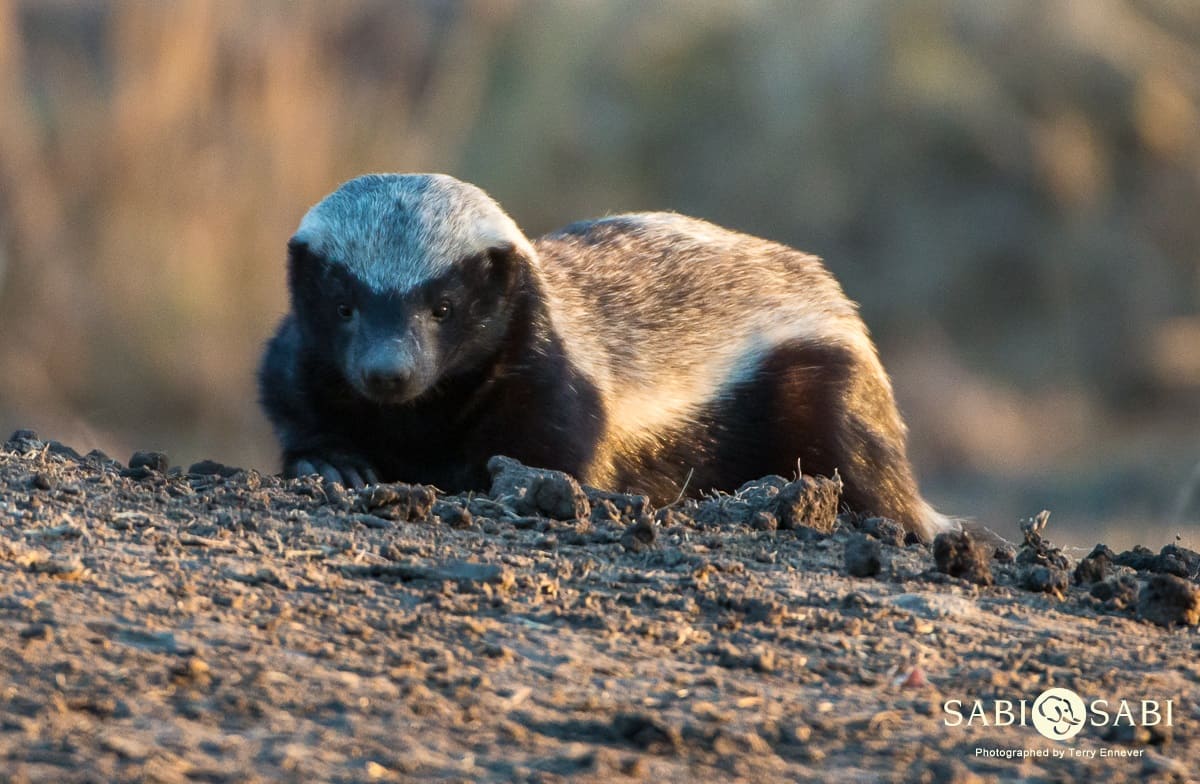Honey Badger
on Jan 03, 2019Species name: Honey Badger
Scientific name: Mellivora capensis
Weight: Male: 8-14,5kgs - Female: 8-14,5kgs
Shoulder Height: Male: 25-28cm - Female: 25-28cm
General Habitat: Honey Badgers can be found in numerous habitats, especially thick bushy areas and arid semi-deserts, but they truly succeed in the bushveld. You won’t usually find them in highland savannah, true deserts, or rain forests.
Diet: Generalist Carnivore
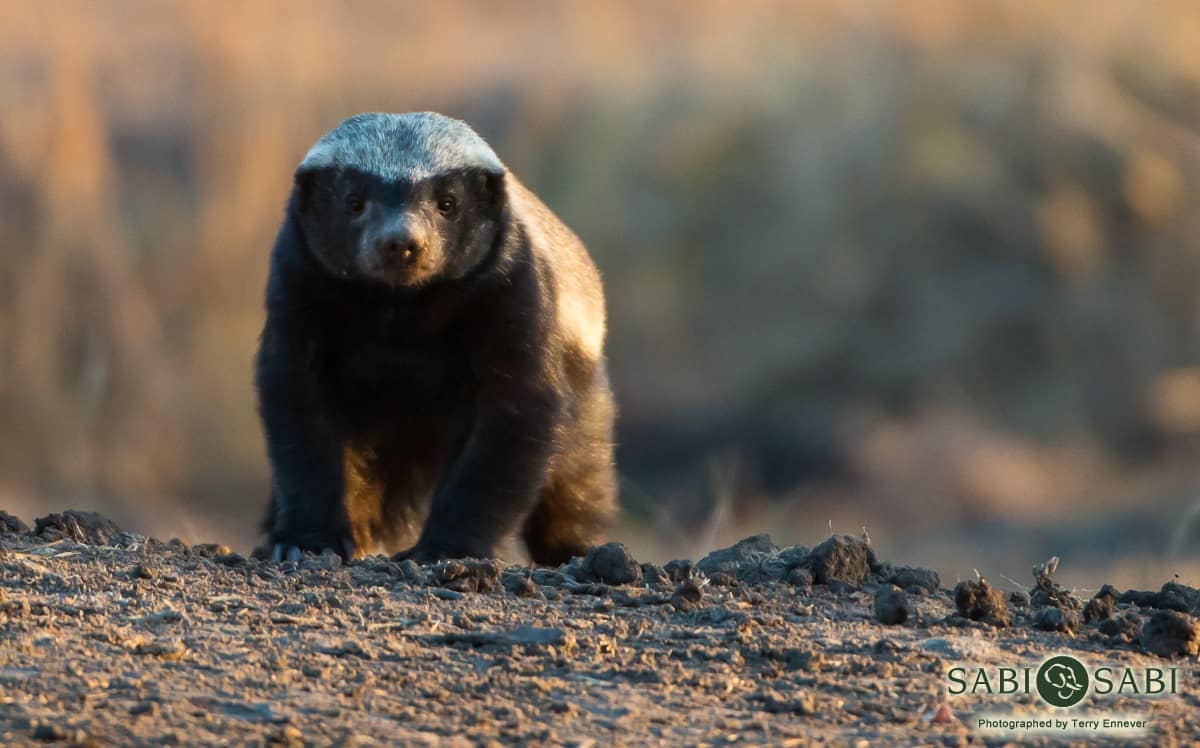
Honey Badgers are pitch black in colour, with a white or grey brown saddle running from the forehead all the way to the tip of the tail. They are built for strength with a compacted body and have an enormous skull which contains a powerful jaw structure with robust teeth. Their front claws can be up to 5cm long and have sharp edges that can inflict immense damage and work as the perfect tool to dig things out of the ground. Their skin, which is loose fitting, can be up to 6mm thick and beneath it there is an elastic layer of tissue that allows them to twist up to 35% inside its skin, which gives them the ability to very flexible and twist around to bite their attacker.
They are very versatile in that they are exceptional swimmers, allowing them to catch terrapins and other water dwelling prey. They are good tree climbers, allowing them to get to chicks in bird’s nests as well as other tree dwelling prey. Believe it or not, Honey Badgers are known to use tools to their advantage, for example, it might roll a stump in the right place and use it as a step to get to bird’s nests, honeycombs, or might even use rocks to crush their prey.
Their senses are immaculate especially their sense of smell. This allows them to sniff out prey hiding away in underground borrows and they even sniff out dung beetle balls, where they will dig them out and break it open to get to the juicy larvae on the inside. Honey Badgers will feast on a variety of different prey including insects, scorpions, spiders, small rodents, small birds, tortoises, snakes, small crocodiles and even young antelope. They also love to eat honey as their name suggests, and even the stings of bees don’t stop them from getting to it. There are even cases of them being bitten by venomous snakes where after they would be passed out for a couple of hours and wake up carrying on with their daily routine as if nothing happened. Nobody really knows why the venom doesn’t kill them, but there are theories that their metabolism could possibly be adapted to cope with the venom.
Honey Badgers are fierce animals, taking no nonsense from any animal. There are recorded cases of Honey Badgers taking on lions, hyenas and leopards. They might have the body size of a small dog, but they truly have the fearless heart of a lion. They literally don’t give a dung about who or what stands in their way. Note to self, “Don’t mess with a Honey Badger!”
Honey Badgers must be one of the most intelligent and probably bravest animals in the bush that I know of. They are so confident, walking through the bush as if they own the place, even though they are not the biggest critters in the bush, they sure act like it. They definitely rank as one of the most interesting animals in the African bush.
My Memorable Sighting
On a fresh summer’s morning, with the grass still wet from a thunderstorm we had the previous evening, we came across a female leopard, actively in search of prey. Her attention was quickly drawn to a Honey Badger digging out dung balls of dung beetles and breaking it open to get to the larvae on the inside. This young inexperienced female leopard decided to chase the Honey Badger and out of nowhere, three other Honey Badgers popped out and ran off in to the bush. Luckily the leopard came to her senses and stopped the pursuit. She just stared at the four annoyed Honey Badgers and continued her search for a more appetising prey.
Photo Content
